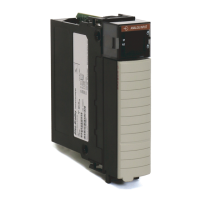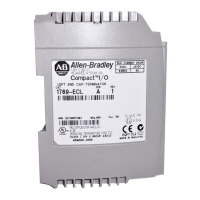Rockwell Automation Publication 1756-AT017A-EN-P - January 2013
2 Position-based Output Control with the MAOC Instruction
Description
The MAOC instruction enables you to synchronize digital outputs with axis
motion. At low speeds, you can use the instruction with a standard output
module to ease the axis and output synchronization. As performance
requirements increase, a scheduled output module is necessary to operate with
tight time synchronization.
This document describes three application examples that benefit from an
MAOC-based solution.
Strobe Trigger
A strobe trigger initiates systems, such as cameras, bar code scanners, or other
self-contained processes, that detect a rising edge input.
In this application, use the instruction to follow the position of the conveyor axis:
• The instruction triggers the strobe each time the conveyor moves a preset
distance.
• The instruction simplifies programming and the mechanical system.
Because the instruction controls the monitoring and trigger, it eliminates
the need to monitor limit switches or axis position in application code.
This frees up scan time and logic to focus on other aspects of the machine.
This also enables the strobe to have a very short and repeatable duration.
Applicator Control
The MAOC instruction is useful with glue applicators or other applications that
turn an output On and Off as the master line shaft changes position and forces
the output On if needed.
In this application, use the instruction to follow the master line shaft virtual axis:
• Program the compensation data to account for the mechanical delays of
turning the solenoid valve On and Off.
• Use enable bits to allow operator-based manual control of the outputs.
When used with gluing applications, the instruction reduces complex
compensation math. The Purge function is especially useful for glue applicators
that need to clear the lines.

